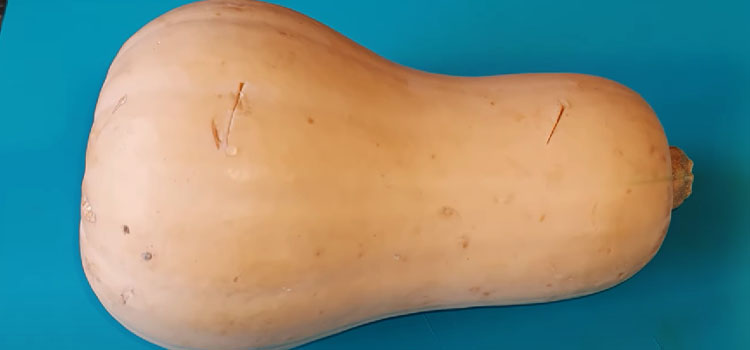Last Updated on September 16, 2024 by Shari Mason
Imagine walking through a bustling autumn farmer’s market, bursting with colorful squashes of all kinds. A thought pops into your head, **”Can butternut squash and spaghetti squash be swapped?”**
It’s like figuring out which apple to pick from a barrel of choices. I had my thoughts but knew we needed a simple answer to the squash puzzle.
So, let’s dive in and discover the easy-to-understand differences between these two squashes.
Butternut Squash vs Spaghetti Squash


At first glance, butternut and spaghetti squashes might seem similar due to their gourd family ties, but their appearances tell distinct stories.
Butternut squash [1] is bell-shaped, showcasing a smooth, beige skin.
In contrast, spaghetti squash is more oval or cylindrical with a textured, yellowish rind.
“You know, when you get your first asparagus, or your first acorn squash, or your first really good tomato of the season, those are the moments that define the cook’s year. I get more excited by that than anything else.”
– Mario Batali, Chef
Their differences are more than skin deep, but you can easily distinguish one from the other by observing their unique contours and colors.
Read:
- Best Tasting Winter Squash
- Will Butternut Squash Ripen Off The Vine?
- How To Roast A Whole Butternut Squash?
- How To Tell If Butternut Squash Is Bad?
- Are Canned Yams And Sweet Potatoes The Same?
How Do Their Textures Differ?
When cooked, the textural differences between butternut and spaghetti squashes are pronounced. Butternut squash offers a creamy, smooth consistency, almost like a sweet potato.
It’s perfect for purees or soups due to its rich texture. On the other hand, spaghetti squash, true to its name, has a unique, stringy texture that separates into strands resembling spaghetti.
This characteristic makes it an excellent low-carb substitute for traditional pasta, granting it its name and culinary niche.
Do They Taste The Same?
While both butternut and spaghetti squashes have a natural sweetness, their flavors are distinct. Butternut squash boasts a richer, nuttier taste, often compared to a pumpkin or sweet potato, making it a popular choice for hearty dishes.
Spaghetti squash has a milder and slightly more neutral flavor, allowing it to adopt the taste of accompanying sauces or seasonings quickly.
Its subtlety is one reason it’s lauded as a pasta substitute; it complements a wide range of toppings without overpowering them.
Which Is Better For Diet-Conscious Individuals?
For diet-conscious individuals, both butternut and spaghetti squashes are excellent choices, but they serve different nutritional purposes.
Spaghetti squash [2] is particularly low in calories and carbohydrates, making it a preferred alternative to traditional pasta for those on low-carb or calorie-restricted diets.
“In the garden of gourds, while butternut sings a sweet lullaby, spaghetti squash dances to its own stringy tune.”
-Eat Pallet Restaurant & Food Advice
Butternut squash, while slightly higher in calories and carbs, is packed with vitamins like A and C and provides more dietary fiber.
How Do You Cook Them?


1. Butternut Squash:
- Roasting:
- Preheat oven to 400°F (205°C).
- Cut the squash in half lengthwise and remove the seeds.
- Drizzle with olive oil, and sprinkle with salt and pepper (or desired seasonings).
- Place cut side down on a baking sheet.
- Roast for 45-50 minutes or until tender and easily pierced with a fork.
- Once cooked, the flesh can be scooped out and mashed, puréed, or diced.
- Steaming:
- Peel the squash and cut it into chunks.
- Add about an inch of water to a pot and insert a steamer basket.
- Add the squash chunks to the basket.
- Cover and steam for about 7-10 minutes or until tender.
- Microwaving:
- Cut the squash into quarters and remove the seeds.
- Place in a microwave-safe dish with a bit of water.
- Cover and microwave on high for 10-15 minutes or until tender.
2. Spaghetti Squash:
- Roasting:
- Preheat oven to 400°F (205°C).
- Cut the squash in half lengthwise and remove the seeds.
- Drizzle with olive oil and season as desired.
- Place cut side down on a baking sheet.
- Roast for 40-45 minutes or until the inside quickly shreds with a fork.
- Once roasted, use a fork to scrape the “spaghetti” strands.
- Microwaving:
- Cut the squash in half and remove the seeds.
- Place in a microwave-safe dish, cut side down, with a bit of water.
- Cover and microwave high for 10-12 minutes or until the inside is tender and easily shreds.
- Boiling:
- Cut the squash into quarters and remove the seeds.
- Boil in a large pot of water for 20-25 minutes.
- Once cooked, use a fork to shred the flesh into “spaghetti” strands.
FAQs
u003cstrongu003eWhat squash is most similar to butternut squash?u003c/strongu003e
The acorn squash is similar to butternut squash in flavor and texture, though it’s slightly nuttier and less sweet.
u003cstrongu003eWhat squash is similar to spaghetti squash?u003c/strongu003e
In terms of its unique stringy texture, no other squash truly replicates spaghetti squash. However, in terms of flavor, delicata and yellow summer squash can be similar, albeit not as neutral in taste.
Key Takeaways
Butternut squash and spaghetti squash are distinctly different varieties of winter squash, each with its unique texture, appearance, and flavor profile.
While the butternut is creamy and slightly sweet, making it perfect for soups and purées, spaghetti squash stands out with its stringy texture that can mimic pasta.
Though both offer nutritious benefits and can be a delightful addition to various dishes, understanding their differences ensures they are used to their full potential in the kitchen.
References:
- https://www.allrecipes.com/recipe/229733/simple-roasted-butternut-squash/
- https://www.healthline.com/nutrition/spaghetti-squash
- Can You Put an AC Unit in the Kitchen? - September 27, 2024
- What Cheese Does Olive Garden Use? Discover Their Signature - September 27, 2024
- How to Cancel a Pizza Hut Order? Quick & Easy Guide - September 24, 2024


